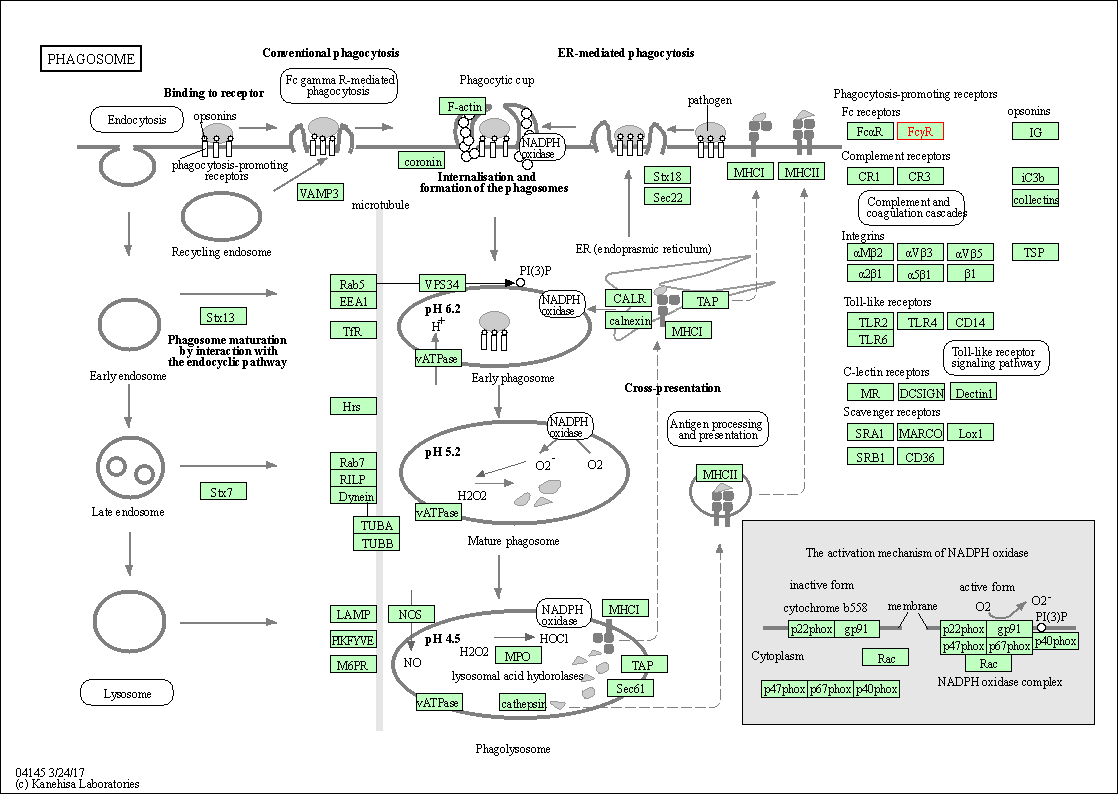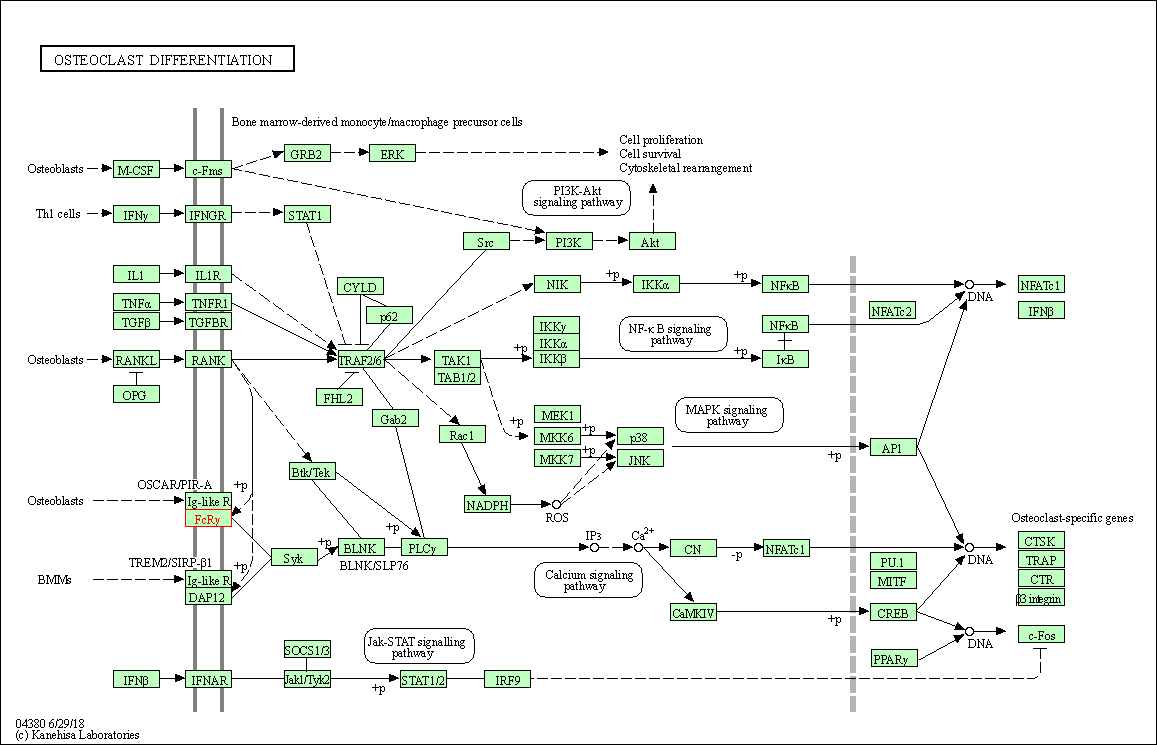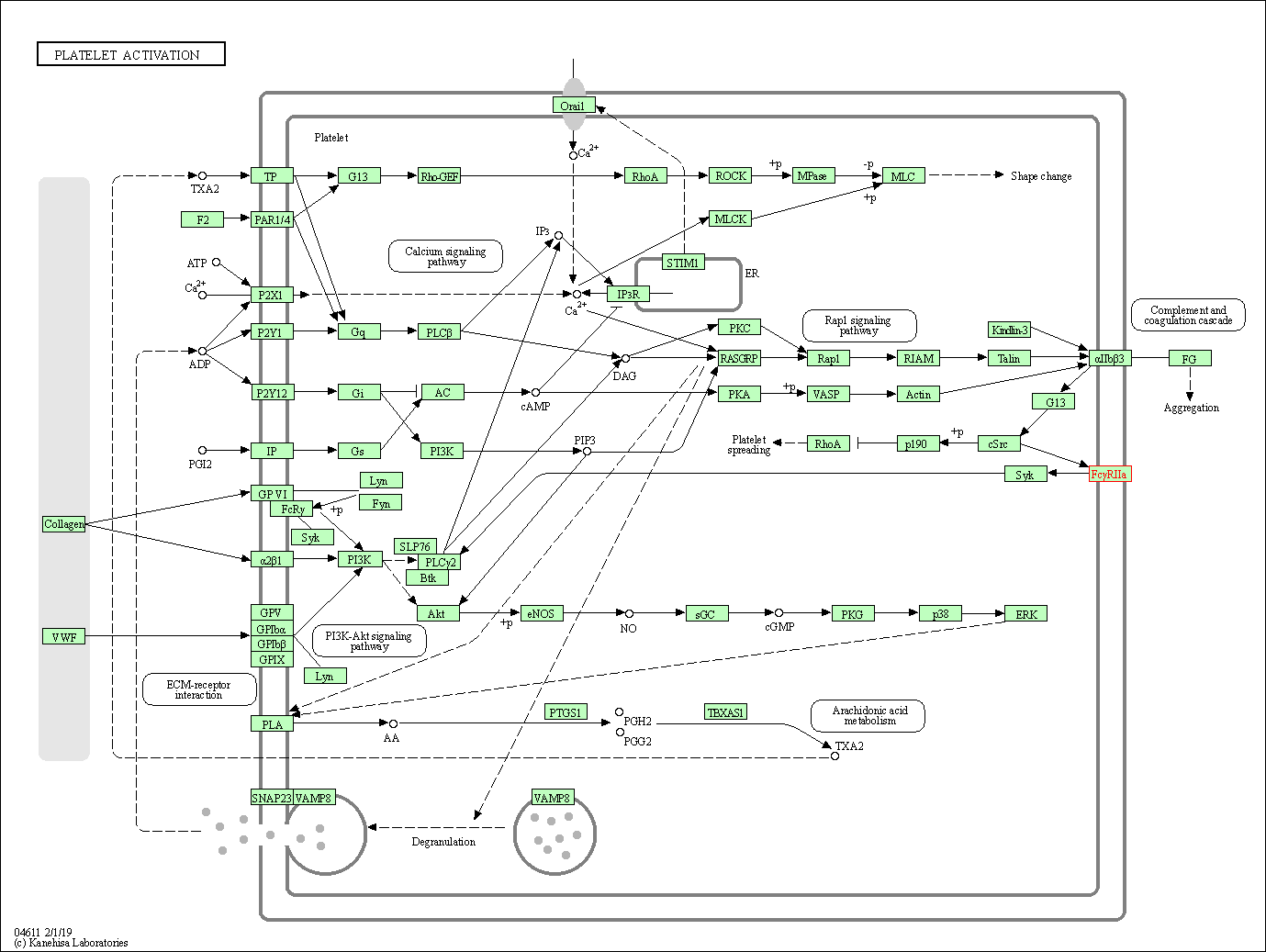Target Information
| Target General Information | Top | |||||
|---|---|---|---|---|---|---|
| Target ID |
T22212
(Former ID: TTDS00515)
|
|||||
| Target Name |
Immunoglobulin gamma Fc receptor IIA (FCGR2A)
|
|||||
| Synonyms |
Low affinity immunoglobulin gamma Fc region receptor II-a; IgG Fc receptor II-a; FcRII-a; Fc-gamma-RIIa; Fc-gamma RII-a; FCGR2A1; FCG2A; CDw32 A; CD32 A
Click to Show/Hide
|
|||||
| Gene Name |
FCGR2A
|
|||||
| Target Type |
Successful target
|
[1] | ||||
| Disease | [+] 1 Target-related Diseases | + | ||||
| 1 | Thrombocytopenia [ICD-11: 3B64] | |||||
| Function |
Binds to the Fc region of immunoglobulins gamma. Low affinity receptor. By binding to IgG it initiates cellular responses against pathogens and soluble antigens. Promotes phagocytosis of opsonized antigens.
Click to Show/Hide
|
|||||
| BioChemical Class |
Immunoglobulin
|
|||||
| UniProt ID | ||||||
| Sequence |
MTMETQMSQNVCPRNLWLLQPLTVLLLLASADSQAAAPPKAVLKLEPPWINVLQEDSVTL
TCQGARSPESDSIQWFHNGNLIPTHTQPSYRFKANNNDSGEYTCQTGQTSLSDPVHLTVL SEWLVLQTPHLEFQEGETIMLRCHSWKDKPLVKVTFFQNGKSQKFSHLDPTFSIPQANHS HSGDYHCTGNIGYTLFSSKPVTITVQVPSMGSSSPMGIIVAVVIATAVAAIVAAVVALIY CRKKRISANSTDPVKAAQFEPPGRQMIAIRKRQLEETNNDYETADGGYMTLNPRAPTDDD KNIYLTLPPNDHVNSNN Click to Show/Hide
|
|||||
| 3D Structure | Click to Show 3D Structure of This Target | AlphaFold | ||||
| Drugs and Modes of Action | Top | |||||
|---|---|---|---|---|---|---|
| Approved Drug(s) | [+] 1 Approved Drugs | + | ||||
| 1 | SM-101 | Drug Info | Approved (orphan drug) | Idiopathic thrombocytopenic purpura | [1] | |
| Mode of Action | [+] 1 Modes of Action | + | ||||
| Antagonist | [+] 1 Antagonist drugs | + | ||||
| 1 | SM-101 | Drug Info | [1] | |||
| Cell-based Target Expression Variations | Top | |||||
|---|---|---|---|---|---|---|
| Cell-based Target Expression Variations | ||||||
| Different Human System Profiles of Target | Top |
|---|---|
|
Human Similarity Proteins
of target is determined by comparing the sequence similarity of all human proteins with the target based on BLAST. The similarity proteins for a target are defined as the proteins with E-value < 0.005 and outside the protein families of the target.
A target that has fewer human similarity proteins outside its family is commonly regarded to possess a greater capacity to avoid undesired interactions and thus increase the possibility of finding successful drugs
(Brief Bioinform, 21: 649-662, 2020).
Human Tissue Distribution
of target is determined from a proteomics study that quantified more than 12,000 genes across 32 normal human tissues. Tissue Specificity (TS) score was used to define the enrichment of target across tissues.
The distribution of targets among different tissues or organs need to be taken into consideration when assessing the target druggability, as it is generally accepted that the wider the target distribution, the greater the concern over potential adverse effects
(Nat Rev Drug Discov, 20: 64-81, 2021).
Human Pathway Affiliation
of target is determined by the life-essential pathways provided on KEGG database. The target-affiliated pathways were defined based on the following two criteria (a) the pathways of the studied target should be life-essential for both healthy individuals and patients, and (b) the studied target should occupy an upstream position in the pathways and therefore had the ability to regulate biological function.
Targets involved in a fewer pathways have greater likelihood to be successfully developed, while those associated with more human pathways increase the chance of undesirable interferences with other human processes
(Pharmacol Rev, 58: 259-279, 2006).
Biological Network Descriptors
of target is determined based on a human protein-protein interactions (PPI) network consisting of 9,309 proteins and 52,713 PPIs, which were with a high confidence score of ≥ 0.95 collected from STRING database.
The network properties of targets based on protein-protein interactions (PPIs) have been widely adopted for the assessment of target’s druggability. Proteins with high node degree tend to have a high impact on network function through multiple interactions, while proteins with high betweenness centrality are regarded to be central for communication in interaction networks and regulate the flow of signaling information
(Front Pharmacol, 9, 1245, 2018;
Curr Opin Struct Biol. 44:134-142, 2017).
Human Similarity Proteins
Human Tissue Distribution
Human Pathway Affiliation
Biological Network Descriptors
|
|
|
Note:
If a protein has TS (tissue specficity) scores at least in one tissue >= 2.5, this protein is called tissue-enriched (including tissue-enriched-but-not-specific and tissue-specific). In the plots, the vertical lines are at thresholds 2.5 and 4.
|
| KEGG Pathway | Pathway ID | Affiliated Target | Pathway Map |
|---|---|---|---|
| Phagosome | hsa04145 | Affiliated Target |

|
| Class: Cellular Processes => Transport and catabolism | Pathway Hierarchy | ||
| Osteoclast differentiation | hsa04380 | Affiliated Target |

|
| Class: Organismal Systems => Development and regeneration | Pathway Hierarchy | ||
| Platelet activation | hsa04611 | Affiliated Target |

|
| Class: Organismal Systems => Immune system | Pathway Hierarchy | ||
| Neutrophil extracellular trap formation | hsa04613 | Affiliated Target |

|
| Class: Organismal Systems => Immune system | Pathway Hierarchy | ||
| Fc gamma R-mediated phagocytosis | hsa04666 | Affiliated Target |

|
| Class: Organismal Systems => Immune system | Pathway Hierarchy | ||
| Degree | 7 | Degree centrality | 7.52E-04 | Betweenness centrality | 6.56E-05 |
|---|---|---|---|---|---|
| Closeness centrality | 2.17E-01 | Radiality | 1.38E+01 | Clustering coefficient | 1.90E-01 |
| Neighborhood connectivity | 3.93E+01 | Topological coefficient | 2.14E-01 | Eccentricity | 11 |
| Download | Click to Download the Full PPI Network of This Target | ||||
| Target Regulators | Top | |||||
|---|---|---|---|---|---|---|
| Target-interacting Proteins | ||||||
| Target Affiliated Biological Pathways | Top | |||||
|---|---|---|---|---|---|---|
| KEGG Pathway | [+] 8 KEGG Pathways | + | ||||
| 1 | Phagosome | |||||
| 2 | Osteoclast differentiation | |||||
| 3 | Platelet activation | |||||
| 4 | Fc gamma R-mediated phagocytosis | |||||
| 5 | Leishmaniasis | |||||
| 6 | Staphylococcus aureus infection | |||||
| 7 | Tuberculosis | |||||
| 8 | Systemic lupus erythematosus | |||||
| PID Pathway | [+] 2 PID Pathways | + | ||||
| 1 | Signaling events mediated by PTP1B | |||||
| 2 | Beta2 integrin cell surface interactions | |||||
| Reactome | [+] 3 Reactome Pathways | + | ||||
| 1 | FCGR activation | |||||
| 2 | Regulation of actin dynamics for phagocytic cup formation | |||||
| 3 | Role of phospholipids in phagocytosis | |||||
| WikiPathways | [+] 2 WikiPathways | + | ||||
| 1 | Fcgamma receptor (FCGR) dependent phagocytosis | |||||
| 2 | Spinal Cord Injury | |||||
| Target-Related Models and Studies | Top | |||||
|---|---|---|---|---|---|---|
| Target Validation | ||||||
| References | Top | |||||
|---|---|---|---|---|---|---|
| REF 1 | Emerging drugs for idiopathic thrombocytopenic purpura in adults. Expert Opin Emerg Drugs. 2008 Jun;13(2):237-54. | |||||
If You Find Any Error in Data or Bug in Web Service, Please Kindly Report It to Dr. Zhou and Dr. Zhang.

